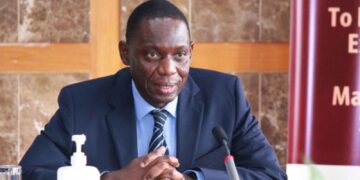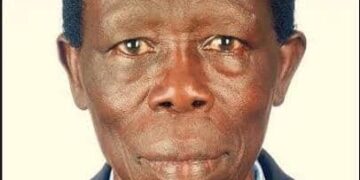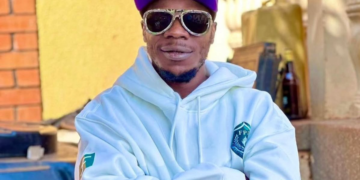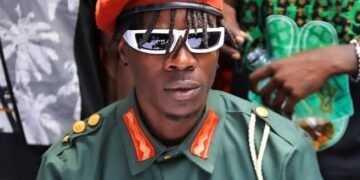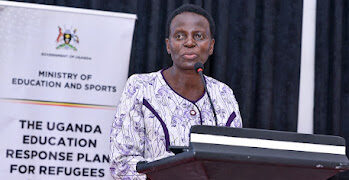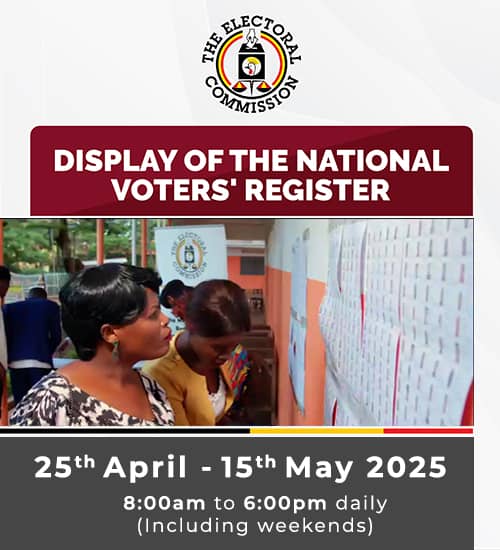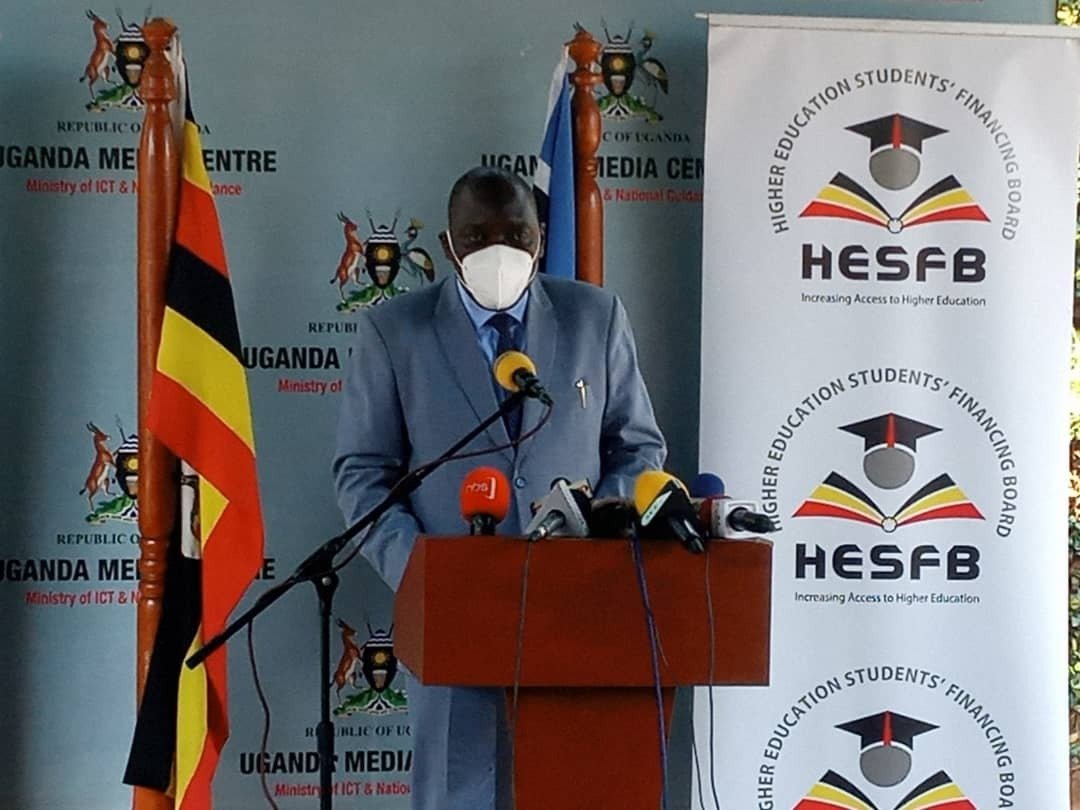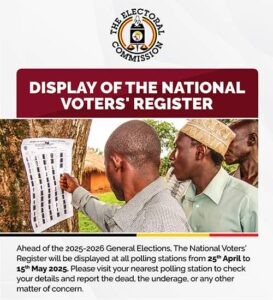On 3 June, thousands gather every year at Namugongo for the annual commemoration of the 45 young men who were murdered between 1885 and 1887 by Kabaka (King) Mwanga, a traditional leader of the Buganda Kingdom. The 23 Anglican and 22 Catholic young men were reportedly murdered for their faith by either beng speared, hacked to death or burnt alive on orders of Kabaka Mwanga.
While tradition has it that they were killed for refusing to denounce their faith, there are other possible contributory factors that deserve to be recognized. The retelling of the martyrs’ story has many gaps that are left unaddressed.
Religious leaders owe their congregations the right to understand fully the reasons behind the killing of the 45 young men, as opposed to a one-sided argument that they were killed only for their faith. Sabasaba digs deep into achieves to retell this story of strong-willed individuals who expressed unmatched valor to defend what they believed was in their own right.
The early missionaries:
In the early 1870s, Henry Morton Stanley published a letter in London. The letter, purported to be from King Mwanga’s predecessor, Mutesa I, was an open invitation for missionaries of all Christian denominations to his kingdom. Although its authenticity is disputed, it did not stop several missions from sending representatives to the Ugandan monarchy.
Christian missionaries, both Catholic and Anglican, arrived in the interior of Africa during the late nineteenth century. The first of the Catholic missions was established by the White Fathers, a missionary society founded by the French cardinal Charles Lavigerie, the archbishop of Algiers and Carthage. (The White Fathers took their name not from the color of their skin but from the color of their long tunic).
As early as 1878, when he was asked by Pope Leo XIII to take charge of the missions in equatorial Africa, Lavigerie began a series of annual caravan journeys to central Africa as part of the Catholic evangelization of the area. The next year, a Catholic mission was founded in what is now Uganda.
The largest and most powerful of the local ethnic groups was the Baganda, a group in which European missionaries took particular interest. Edward Rice offers an overview of the importance of the region and the Baganda people in his book titled: Captain Sir Richard Francis Burton, a biography of the Victorian explorer and linguist.
Rice recounts that the Baganda were among the richest and most advanced tribes in central Africa. Moreover, they “bore a certain patina of civilization that was to astound Europeans later, with well-organized bureaucracies, statesmanship of a superior order, finely developed arts and architecture, and unusual handicrafts.” Yet the civilization also had a dark side, according to Rice, with both rulers and subjects having the reputation of being “unnaturally cruel.”
Mutesa, the 30th Kabaka of the Baganda Kingdom later known as Mukaabya, exemplified this cruel streak. When he took the throne in 1860, to ensure his own political survival he killed his brothers—all sixty of them. Yet he adopted a more or less benign approach to the Christian missionaries. Alban Butler’s Lives of the Saints calls him a “not unfriendly ruler.”
In essence, Mutesa allowed his subjects to choose among any of the faiths being imported into his kingdom—Catholic, Protestant, or Muslim. In turn, each group attempted to assert its influence on the king’s court through the conversion of high-ranking officials. Mutesa, however, pointedly did not choose any one creed. In 1884 he died, still adhering to the local traditional religions.
Conversion to Christianity among the Baganda meant a rejection of the traditional religions. It also implied setting aside of some of the traditional ways of life, an adherence to a new set of moral and religious standards, and, often, the establishment of a new set of alliances, based on religious belief. As a result, the group of new believers (called abasomi, or readers) came to be regarded with suspicion by other Baganda as a dangerous rebel faction. During the reign of Mutesa, however, these suspicions were kept under check.
With the accession of his son, Mwanga, the situation altered dramatically. As a young man, Mwanga had shown some favor to the Christian missionaries, but his attitude changed as soon as he took the throne. According to tradition, the kabaka was the center of all authority and power in the kingdom, and he could use his subjects as he wished.
Resistance to the Kabaka’s bidding:
The presence of the missionaries was severely diminishing Kabaka Mwanga’s authority among the converts. Manuscripts show that Mwanga was also a bisexual, and upon discovering that the young men who had converted to Christianity were beginning to reject his sexual advances, he grew enraged. As a result, the king sought to eliminate Christianity from his kingdom and began a violent persecution of the missionaries and the new Christians.
In January of 1885, Mwanga had three Baganda Anglicans— Joseph Rugarama, Mark Kakumba, and Noah Serwanga— dismembered and their bodies burned. In October of that same year the newly arrived Anglican bishop, James Hannington, was murdered along with his caravan on their way to the region through Busoga.
In response, Joseph Mukasa, a senior adviser to the kabaka and a recent Catholic convert, reproached Mwanga for executing Bishop Hannington without having offered him the customary opportunity to defend himself. Mwanga, furious at what he saw as Mukasa’s insolence, had him beheaded on November 15, 1885. Mukasa became the first of the black Catholic martyrs on the continent.
Among those now in obvious danger was the head of the royal pages, Charles Lwanga, who had been instructed in Christianity by the White Fathers and who was now Mukasa’s successor in guiding the young converts. The day of Joseph Mukasa’s death, Lwanga went to the Catholic mission with other catechumens (those who were receiving religious instruction), and together with them he was baptized by Siméon Lourdel, one of the White Fathers. Among the pages was Kizito, age fourteen.
Their saga is retold by a current-day White Father, Aylward Shorter, of the Catholic University of East Africa, in Nairobi. According to Fr. Shorter, the next day the pages were summoned into the royal court by the enraged kabaka.
The king had learned that one of the young pages in his court, Mwafu, had been receiving religious instruction from another page, Denis Sebuggwawo. The king demanded that the pages confess their allegiance to him. All but three of the Catholic and Anglican pages did so.
Mwanga, apparently baffled by this solidarity, put off their executions. At one point Charles Lwanga—echoing the stance of another, earlier, martyr, St. Thomas More—stated his allegiance to the kingdom of Buganda, declaring his willingness to lay down his life for the king. He would not, however, renounce his faith.
In February, a fire in the royal palace impelled Mwanga to move his court to a lodge on the banks of Lake Victoria. While there, Charles Lwanga protected several of the pages against the king’s violent sexual advances. Mwanga by this point had already obtained the consent from his chiefs to kill the Baganda Christians. Around this time, Lwanga secretly baptized five of the catechumens.
On May 26, the pages were called into the royal courtyard to hear their fate. From this point on, the story of the Ugandan martyrs closely resembles those of the early Christians. Fr. Lourdel, who had repeatedly pleaded for an audience with the king, was an unwilling witness. All of the men declared that they were prepared to remain Christians until death. In the end, Mwanga decreed that all of them—sixteen Catholics and ten Anglicans—be marched to Namugongo, eight miles away, where they would be burned.
On their way to execution, bound by ropes and shackles, they were marched past Fr. Lourdel, who would later attest to their remarkably calm disposition. They were marched to Namugongo, where, bound with ropes, shackles, iron rings, and slave yokes, they waited for one week. During that time the martyrs prayed and sang hymns; the Catholics among them recited morning and evening prayers, grace before and after meals, as well as the Angelus and the rosary, in preparation for their deaths.
The execution:
On June 3, before the execution of the rest of the young men, Charles Lwanga was put to death by the king’s men. He was wrapped tightly in a reed mat, a yoke was hung on his neck, and he was thrown onto a pyre. Taunting his executioners, Charles is said to have shouted, “You are burning me, but it is as if you are pouring water over my body!” Before he died he cried out, “Katonda,” or “My God.”
His companions were killed in the same gruesome fashion. Aylward Shorter writes, “As the flames rose, their voices could be heard praying and encouraging one another.” The last words of the young Kizito were “Good-bye, friends. We are on our way.” In all, forty-five Christians were martyred at Namugongo: twenty-two Catholics and twenty-three Anglicans.
The 45 young men were murdered partly for demurring to abandon Christianity, which they had converted to, but also for their refusal to have gay sex with the king. History has exalted them and vilified the brutal homosexual that Mwanga became. This, however, is a fact that is hardly mentioned in Uganda’s religious circles.
In fact, none of the religious leaders are on record for giving information about the gay king that Mwanga was.
One of the earliest written records of Mwanga’s sexual preferences was a letter by Alexander Mackay, a Presbyterian missionary. The letter told the story of how a young page, Apollo Kaggwa, had been punished for refusing to sleep with the king. Mackay further wrote that Mwanga had copied homosexual behavior from Arabs at his court.
The first victim of the king’s wrath was his page, Joseph Mukasa Balikuddembe, a leader among Christians, on 15 November 1885. He was killed for pleading with the king to abandon homosexuality and not to kill Bishop Hannington, an Anglican missionary, who had entered Buganda through another kingdom, that of Busoga.
From that point onwards, the king turned against all Christians who refused to give in to his homosexual demands. These Christians were also persuading the king’s pages to defy all his orders. Some of these young men were hacked to pieces; others were speared, while the rest were burnt alive at Namugongo.
In 1964, Pope Paul VI canonized all twenty-two of the Catholic martyrs. Five years later, as the first pope to visit sub-Saharan Africa, he laid the foundation stone of the shrine to be built in Namugongo in honor of St. Charles Lwanga and his companions. The shrine was completed in 1975, on June 3, now the feast day of the Ugandan martyrs.
The 20 Roman Catholic victims were beatified by Pope Benedict XV on 6 June 1920 and canonized by Pope Paul VI on 18 October 1964. The two victims who were speared to death at Paimol, Gulu in Northern Uganda in October 1928 were beatified by Pope John Paul on 20 October 2002.
















